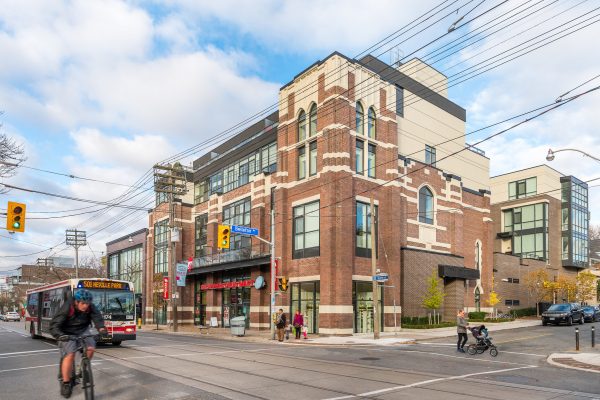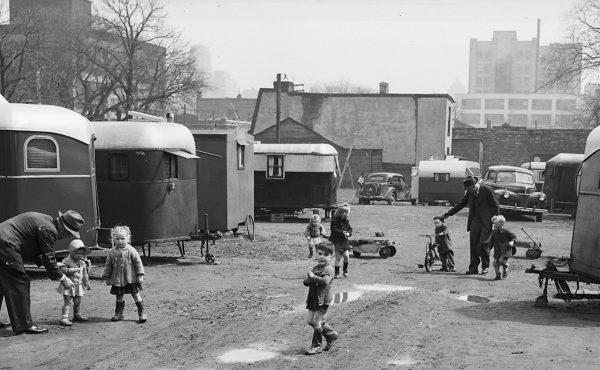The year 2021 comes with high expectations, expectations to get back to the work we started pre-COVID and to build back stronger when it’s over.
In addition to our continued fight against COVID, this year has to be the year of the missing middle. Despite the pandemic shifting how and where we live, Toronto continues to grow at a rapid pace. If we want this city to continue being a place of growth and opportunity, we have to introduce more housing stock and more housing choice. At the moment, we just don’t have many options outside of the million-dollar home or the small starter condo.
The Missing Middle is about bringing housing options in between: physically, through forms like duplexes, triplexes, or a four-storey apartment, or in between in terms of affordability. The latest update on the Beaches-East York Pilot released this week will help that missing middle vision become reality.
Last year Council adopted an Expanding Neighbourhood Housing Options workplan that charted a path to tackling the missing middle question comprehensively. Impressively and importantly, it advanced despite the pandemic, speaking to just how central this work is to our city.
That report generated strong reactions on both sides of the issue. Too far reaching for some, not bold enough for others. Either way, the fact is the missing middle isn’t going to be found through any one report. It’s going to take deep engagement and, specifically, participation from new voices to generate the political will to move the needle.
While we don’t have new Official Plan chapters and bylaw chapters on the Council agenda, the work has started on a new template for housing in our neighbourhoods. Throughout 2021, I’ll be working with City divisions and development partners on a pilot development in Beaches-East York to bring us closer to the planning changes we need.
We’ll be setting out this spring to find a city-owned site and the right partners for the project. From there, the work will be to go through every step of the development process, from design to construction. This Pilot is about accomplishing two key tasks. One, building housing that meets the Missing Middle typology while aiming to incorporate the affordability and sustainability elements Toronto needs. Two, through undertaking that development process, to identify the execution issues so we can bring forward the policy corrections that’ll make what we achieve in the Pilot build replicable across the city.
Pilot programs — especially ones with names ending in “TO” — have become a punchline for urbanist-policy humour in the city. Not all pilot projects are built equally. This one is about advancing policy priorities off the page and directly into our neighbourhoods, through the literal and tangible process of developing a site.
Changing land use and built form in our neighbourhoods won’t happen without helping people understand the look and feel of missing middle housing at the ground level. Consultations on technical policy language won’t get us the engagement or the understanding we need to make this kind of change. We can build better conversations and policy tools out from there.
There is a policy paintbrush that would set out sweeping, unilateral zoning changes across all areas of the city. But when we bluntly impose changes, we lose momentum and support. We risk making a conversation binary, shutting down opportunities for productive iteration.
My vision of good local politics is one where dialogue drives policy change through a community-led process. Trying to do so without the right tools behind you, however, is like carrying a paintbrush into battle.
I’m personally ready for Missing Middle housing to be here — but not everyone is yet. The update report released this week sets us up to get to work in the year ahead. It sets out the technical case and shows us the facts. But just as important as the facts is the work of making people feel heard, and bringing them along.
That work is messy. At best it’s painstaking, at worst it can be infuriating. But if we’re going to make 2021 the year of missing middle, it’s going to take everyone with an interest in an issue to go above and beyond.
So this is really an invitation to all of you: to get involved, to make a deputation to the Planning and Housing Committee, to write to your elected officials, and most importantly, to have conversations with the people who might not be as invested (or even aware) of the missing middle.
There’s a long list of issues to tackle in the Pilot before we get new policies: zoning nuances, affordability, financial replicability, scoping the math on unit counts, improving the application process, to name a few.
Just like the families, first-time developers, nonprofits, and community groups who are attempting missing middle projects, I know we’ll face stumbling blocks along the way.
If we start now and start early we can shift the winds of the long-standing, well-documented vocal constituencies of Toronto planning. Or at least correct course to sail better along them.
Brad Bradford is the Toronto City Councillor for Ward 19 – Beaches-East York.
Photo Copyright Queen’s Printer for Ontario, photo source: Ontario Growth Secretariat, Ministry of Municipal Affairs





5 comments
I’ve yet to hear anyone argue against missing middle housing. Gentle density at a liveable scale in walkable neighborhoods seem to be a win-win for all involved. The question becomes why isn’t the city acting! If it’s what we want let’s incentivize it and developers will build it. The time to act is now and the leadership needs to come from our elected officials. Remove barriers to these developments. Outdated single family zoning. Parking requirement non-sense. Development charges schemes that penalize multi-family development in favour of single family. Etc. Let’s get going on this already!
Almost any “missing middle” development gets decried by locals. I’m a bit surprised some think there is nobody “against missing middle housing.”
Frankly, I think there is a certain subset of folks, such as those at FRONTA, who have been heard more than enough. It easy to attend meetings when you are retired, have a grudge against any form of change, and don’t give two cents about the generation now struggling to afford housing in this city. Secondary and garden suites are radical changes to these folks when it’s clear that it is just tinkering on the edges.
41% of folks voted last municipal election and the reason is clear why the other 60% didn’t. Despite this city’s claims to diversity being our strength, it seems the white, elderly, and wealthy are the ones conduct our land-use planning around to accommodate. We will only move forward as quickly as their most regressive ideas allow.
Our public consultation system is deeply flawed, we don’t need more of the same, we need more action and we needed it yesterday. Want more people to be engaged with city issues, how about start building a city that most people can actually afford to live in. Enough with the pandering to the loudest NIMBY, they don’t speak on behalf of any neighbourhoods they claim to represent, they speak on behalf of their own selfish interests. It’s time to recognize what is good for existing homeowners is not good for future ones or to renters.
The idea that the benefits to existing homeowners from limiting development will trickle down to anyone else is a farce just like trickle down-economics. Time to call a spade a spade and a regressive nimby a regressive nimby.
I live on a street near Coxwell Ave where one side of a semi detached house is being turned into a triplex. This has been utter chaos as there has been multiple zoning changes, no community outreach or communication, numerous build code violations (including a fire, knocking out the gas line and using a space heater while no on was there with a missing door), and no regard to the neighborhood in respect to trash or Covid safety protocols. The people on site have even made fun of seniors for asking them to keep their distance.
The neighbors are not against increasing density, but what is happening here is a disgrace to the city and has many worried that their semi detached homes will become devalued as they reach retirement. They did not agree to share a wall beside three rental units who’s occupants will probably not have ties to the community. No one is offering compensation to these home owners.
In addition, why should this kind of development be allowed to cut down mature trees, expand the housing footprint (including a huge second story deck overlooking several neigboring back yards destroying any sense of privacy) without consequence? This is exactly what has happened here.
There are additional concerns such as street parking, as people already have to walk a distance to find a space because the city does not allow new front pad parking here.
The past and current residents built these neighborhoods to what they are today and love them dearly. It’s heartbreaking to see the worry and anxiety they have, as they contemplate leaving the neighborbood as no one in the city will apparently speak to them or respond to their concerns.
Finally I wish to state that I’m a tenant, so though I don’t have the same vested interest as a home owner, what I see occurring is very wrong and I pray that someone will read this and take action on behalf of my neighborhood before it is destroyed.
Hi Kevin, thanks for the note here. This sounds like the construction project from hell. The City certainly can always do more to better enforce building rules and bylaws on construction sites. Are you East or West of Coxwell? If you’re east of Coxwell drop me a note at councillor_bradford@toronto.ca
A few notes on the planning side of your comments:
– no plans to change any of the rules around tree protection. The tree canopy is essential and we have to keep it healthy.
– I’ve increased parking pad permissions in my ward (Beaches-East York) to support electric vehicle uptake.
– Adding density will be very unlikely to decrease property values. The ability to add density makes land (and by extension homes) more valuable. Certainly, based on personal preferences, more density might make an area less appealing to some people, but as a rule – extra planning permissions on a property will typically increase the value.
Really value your input. Hope you’ll follow me for updates on consultations etc for this.
thanks,
Brad
facebook.com/bradmbradford
twitter.com/bradmbradford
instagram.com/bradfordgrams